You're looking at spec sheets, and the motor power numbers are confusing. Choosing an underpowered motor means your tuk-tuks will struggle on hills and frustrate drivers, hurting your business's reputation.
Motor power, measured in watts (W), is the single most important factor determining an electric tuk-tuk's performance. More power directly translates to a higher top speed and a much stronger ability to climb hills, especially when carrying a full load of passengers.
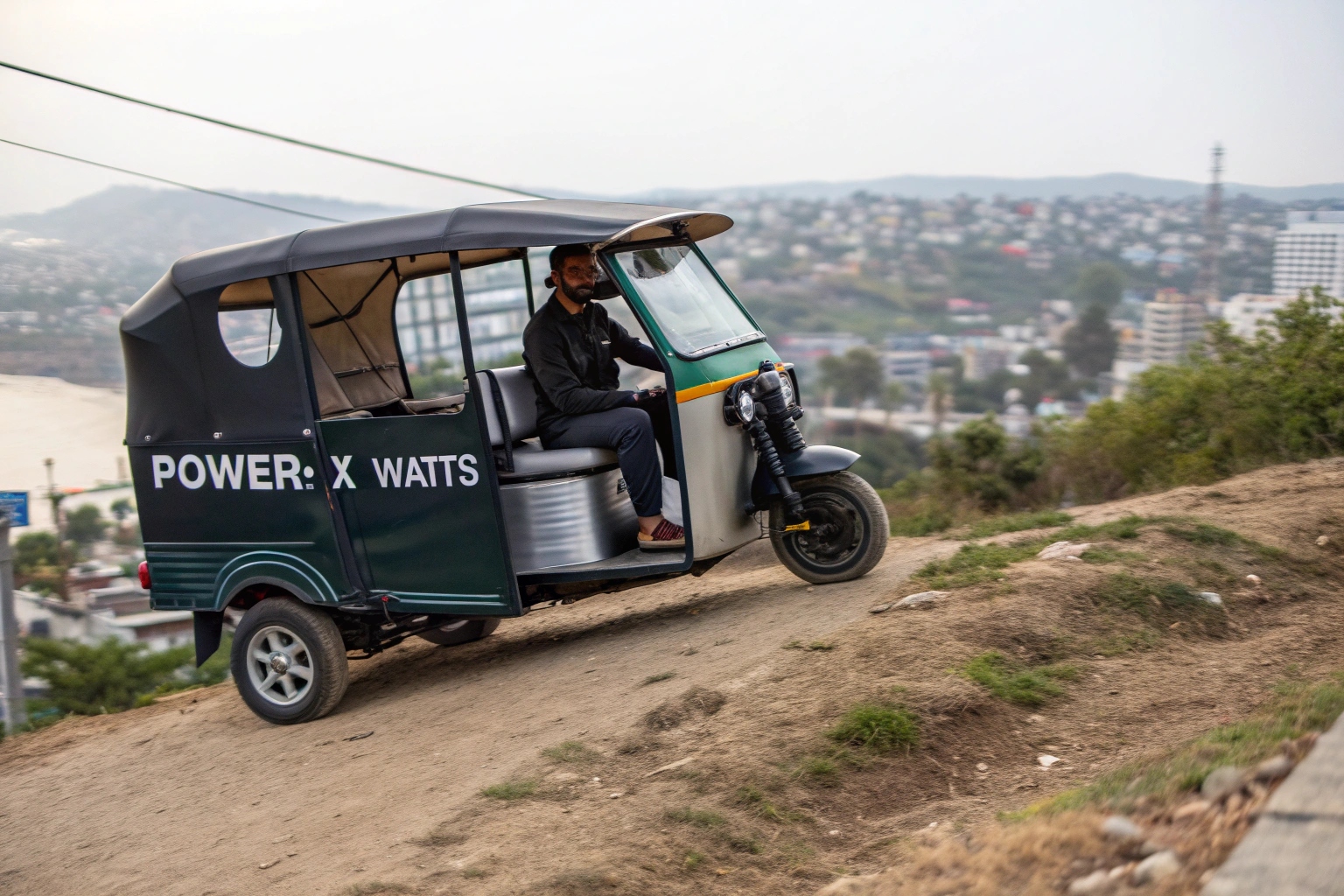
When clients visit my factory, we always end up in the workshop looking at motors. It’s the heart of the vehicle. Choosing the right motor isn't just about picking the biggest number. It’s a crucial decision that balances cost, speed, climbing ability, and battery range. A motor that's perfect for a flat resort island in the Maldives would be a disaster in the hilly streets of a city in Peru. Understanding how power affects performance is key to getting a vehicle that works hard for your business, not one that struggles through the day.
How Much Speed Can Different Motor Powers Deliver in a Tuk Tuk?
You see motors listed from 1500W to 4000W, but you don't know what speed this really means. You risk buying a fleet that is too slow for your city's traffic.
A 1500W-2000W motor can typically power a tuk-tuk to about 30-40 km/h on flat ground. To reliably reach speeds of 45-55 km/h needed for most taxi operations, a 3000W or 4000W motor is the standard and most reliable choice.
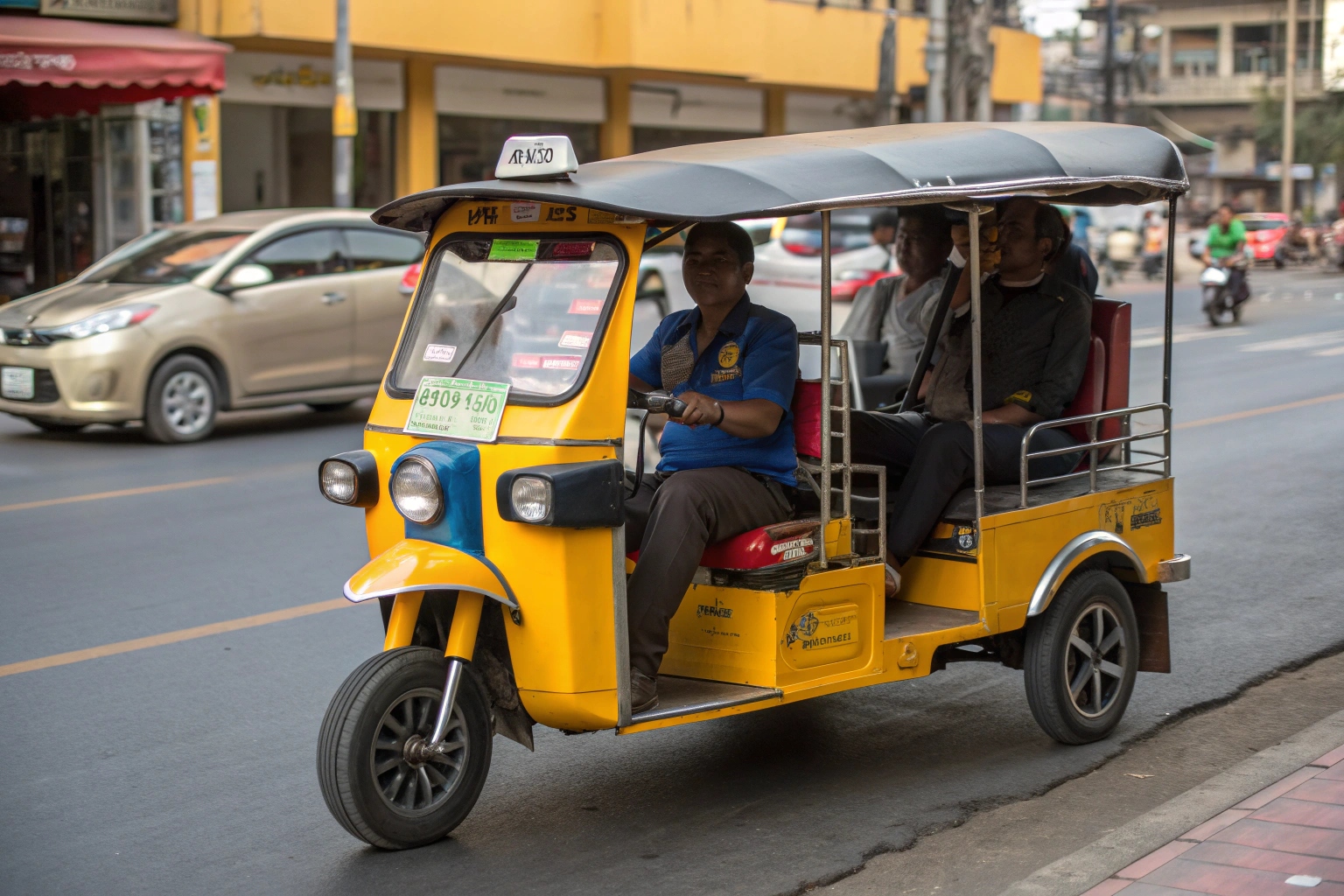
At our factory, we build tuk-tuks with a wide range of motors, and I've seen exactly what each one can do. Yes, you will find some passenger models on the market with a 1500W or 2000W motor. These are perfectly fine for certain jobs—like a slow shuttle inside a private property or for use in very dense, low-speed urban areas. But I always caution my clients about their limits. If you plan to run a professional taxi service that needs to keep up with other cars, a 2000W motor will feel underpowered and will be strained all day long.
For serious commercial use, 3000W is the real starting point. This power level provides enough muscle to comfortably reach 50 km/h, even with a few passengers. It's the sweet spot for balancing performance and energy efficiency. For clients in markets where traffic moves faster, we often recommend a 4000W motor. This provides a top speed of around 55-60 km/h and gives the driver confidence that they have power in reserve. Here’s a general guide:
| พลังงานมอเตอร์ | Expected Top Speed (Ideal) | กรณีใช้งานที่ดีที่สุด |
|---|---|---|
| 1500W - 2000W | 30 - 40 km/h | Low-speed shuttles, flat terrain |
| 3000W | 45 - 50 km/h | Urban taxi fleets, mixed conditions |
| 4000W - 5000W | 55 - 60 km/h | Hilly areas, competing with cars |
Remember, the electronic controller can also limit the top speed for safety, but the motor's power determines what is possible.
How Does Motor Power Influence Hill Climbing Performance?
Your business operates in a city with slopes and hills. An underpowered tuk-tuk slowing to a crawl on an incline is unprofessional and puts a lot of stress on the vehicle's components.
Motor power is what generates torque, the force needed to turn the wheels and push the tuk-tuk up a hill. A low-power motor has low torque and will struggle, while a high-power motor provides the strong, continuous torque required for smooth climbing.
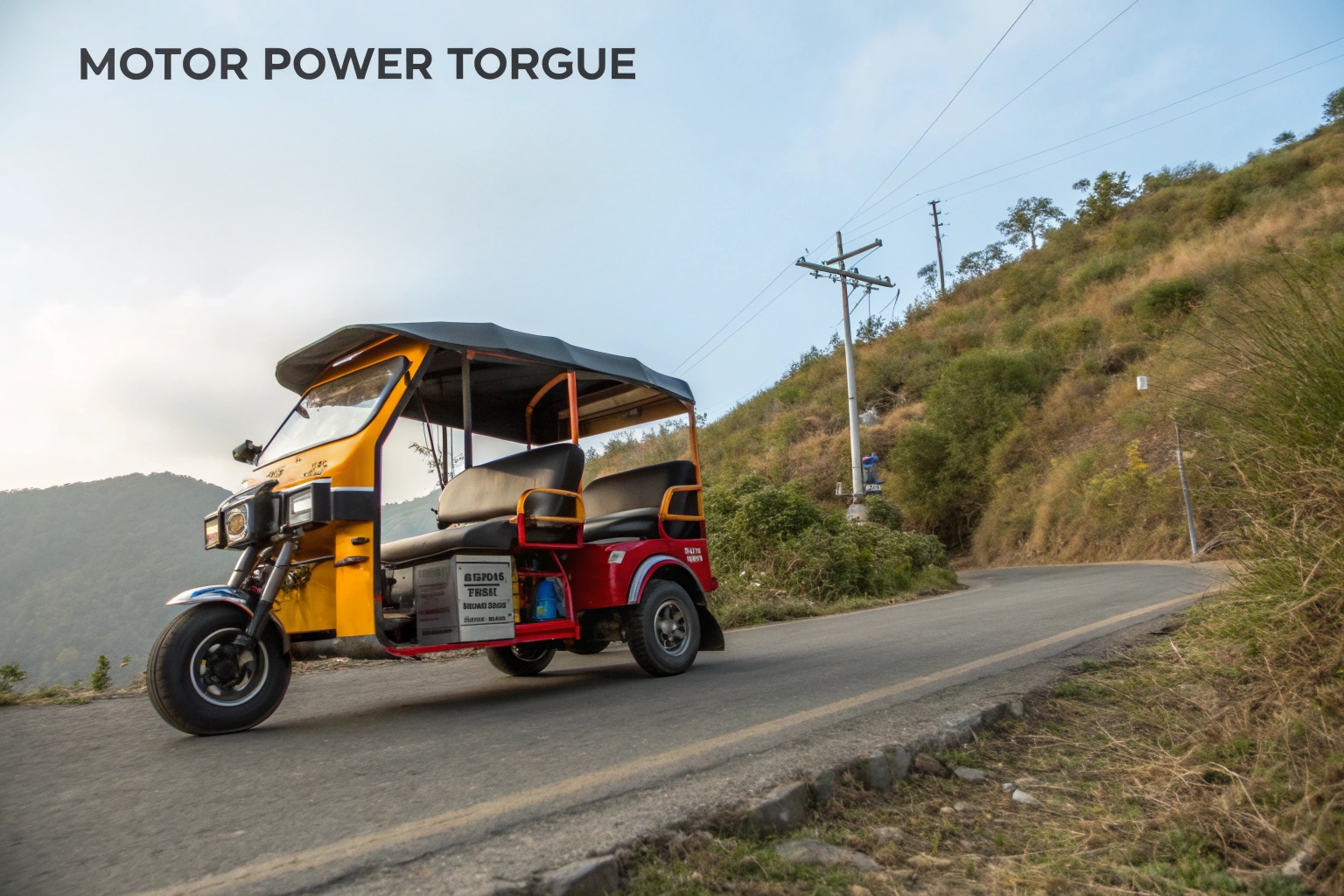
I often explain torque as the "pulling power" of the motor. Top speed is nice, but torque is what gets you moving and what keeps you going when the road gets steep. This is where motor power really shows its importance. We use brushless DC motors in our tuk-tuks, which are excellent at delivering high torque even at low speeds. This is perfect for starting from a stop on a hill.
A small 1500W motor might be able to handle a gentle ramp, like one you'd find in a parking garage. But if you put it on a real city street with a 15-degree slope, it will struggle. For that kind of work, you need the torque that comes from a 3000W motor or more. We also have to consider the difference between continuous power and peak power. A 3000W motor might have a peak power output of 6000W. This "peak power" is a short burst that the motor can provide to overcome a tough spot, like getting over the crest of a hill. It's a key feature for real-world durability. When a client tells me their city is hilly, the conversation immediately shifts from speed to torque and the need for a higher-wattage motor.
How Do Passenger Load and Cargo Weight Affect Speed and Climbing?
You test-drove an empty tuk-tuk, and it felt fast and powerful. You worry that once it's full of passengers, the performance will drop and the vehicle will feel sluggish.
Adding passengers is like asking the motor to do more work. A full passenger load can easily reduce top speed by 15% and make hill climbing much more difficult. A strong motor is required to handle this extra weight without a dramatic loss in performance.
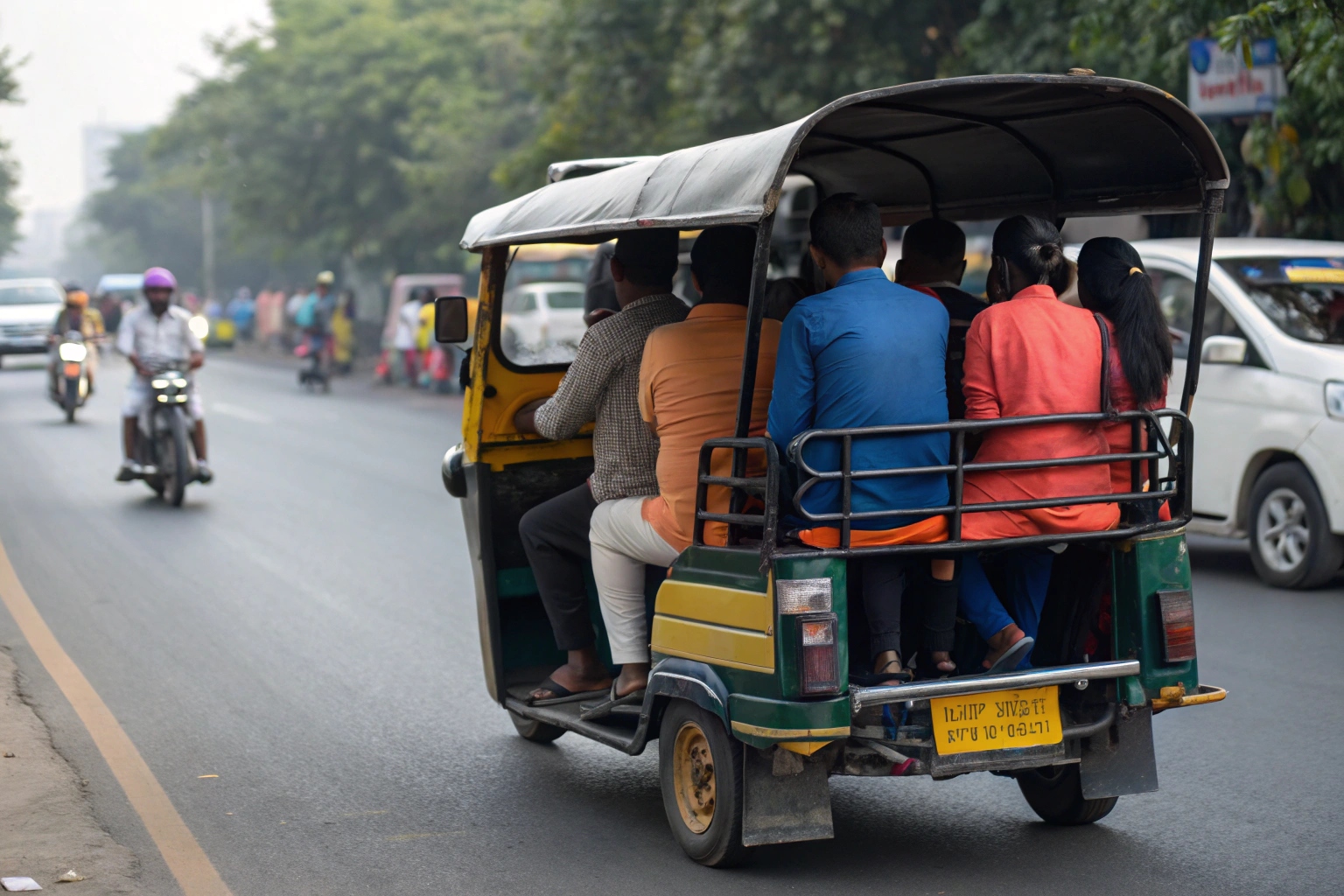
This is a point I emphasize with every single client. The performance of an empty vehicle is not the performance you will get in your daily business. Physics doesn't lie: more weight requires more energy to move. I had a client from a Central American country who wanted to start a taxi service in a very hilly city. He was trying to save money by choosing a 2000W motor. I sent him videos of our tests: the 2000W model with just a driver climbed a 15-degree slope easily. But when we added three more people inside, the speed dropped to less than 10 km/h, and the motor was working extremely hard.
Then, I showed him a video of a 4000W model on the same hill with the same full load. It climbed the hill smoothly at over 25 km/h. He immediately understood. The extra cost for the more powerful motor wasn't a luxury; it was a necessity for his business to function. You must choose a motor that is designed for your expected working load, not for an empty vehicle. Underpowering a vehicle is a false economy—it leads to premature motor burnout and unhappy customers.
Which Motor Power Is Best for Different Tuk Tuk Applications?
You're looking at different motor options and feeling unsure. Choosing the wrong one means you either pay too much for power you don't need or you get a fleet that can't do its job properly.
Match the motor to the job. For controlled, low-speed environments like resorts, 2000W is enough. For professional city taxi services, 3000W is the minimum. For hilly cities or heavy-duty use, 4000W is the smart investment.
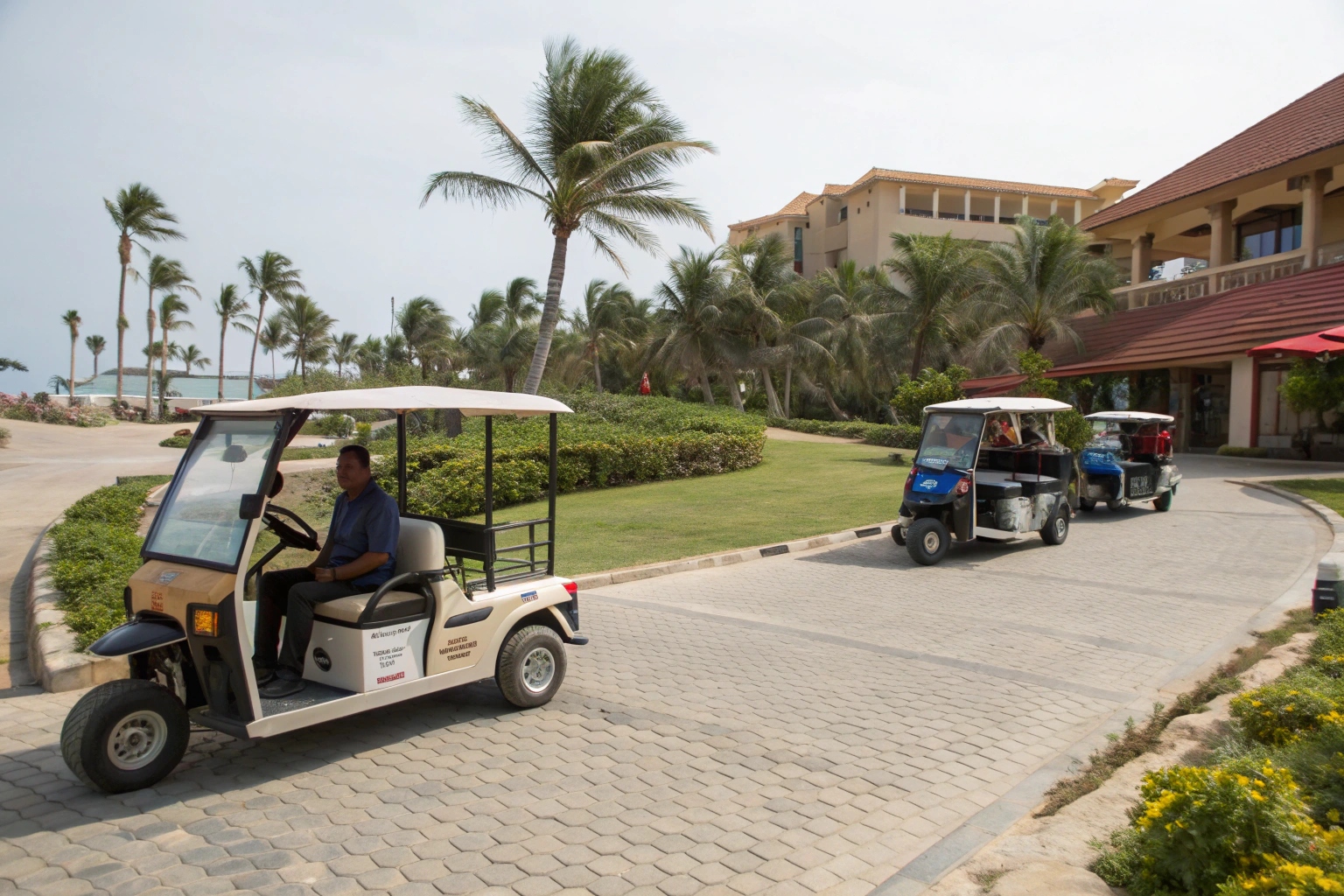
Let's make this very simple. Over the years, I've supplied tuk-tuks for almost every imaginable use case. Based on that experience, here is the breakdown I give my B2B clients to help them choose the right motor power. This is about making a smart investment for your specific business model.
| Vehicle Application | Operating Area | Recommended Motor Power | Why This Power Level? |
|---|---|---|---|
| Resort/Hotel Shuttle | Private, flat roads | 2000W | Speed is low (25-30 km/h), routes are predictable. Efficiency and low cost are priorities. |
| E-Rickshaw (Last Mile) | Dense, flat cities | 1500W | Very short trips at low speed. Minimizes initial cost for drivers. |
| Standard City Taxi | Urban, mixed terrain | 3000W | The professional standard. Balances speed (45-50 km/h), climbing ability, and energy consumption for a full day's work. |
| Hilly City Taxi | Urban, steep hills | 4000W | Provides the necessary torque to climb hills with a full passenger load without losing significant speed. Prevents motor strain. |
| Suburban/Rural Transport | Longer routes, higher speeds | 4000W - 5000W | Needed to maintain higher speeds (55-60 km/h) over longer distances and compete with other traffic. |
My factory rule of thumb is this: if your vehicles will be on public roads, carrying paying customers for 8+ hours a day, start with 3000W. It's the most reliable and versatile option that won't let you or your drivers down.
บทสรุป
Choosing the right motor power is vital for your tuk-tuk's success. More watts mean more speed and better climbing. Match the motor to your specific terrain and business needs.

